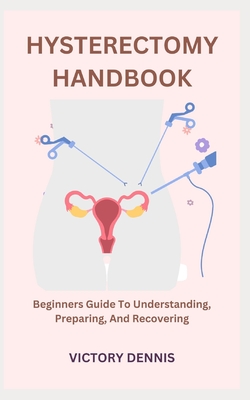You are here
Back to topHysterectomy Handbook: Beginners Guide To Understanding, Preparing, And Recovering (Paperback)
$8.88
Special Order
Description
During a hysterectomy, the uterus (womb) is surgically removed from the body. This is one of the most popular female surgical procedures and is normally performed by a gynecologist. A hysterectomy may be suggested or selected for a variety of reasons, including but not limited to the following:
- Large or uncomfortable fibroids in the uterus (noncancerous growths in the uterus) are a common source of discomfort and bleeding in women.
- Endometriosis: Extreme endometriosis, a painful condition in which tissue normally lining the uterus develops outside of it.
- When the uterus prolapses, or protrudes, into the vaginal canal, this condition is known as uterine prolapse.
- The uterus may need to be removed if cancer has spread there.
- Excessive or irregular menstrual bleeding that does not respond to previous therapies is considered abnormal uterine bleeding.
- When alternative treatments for chronic pelvic discomfort have failed and the underlying cause remains unknown, it may be time to consider surgery.
Hysterectomies can be broken down into the following categories:
- Hysterectomy, often known as a total hysterectomy, is the surgical removal of a woman's uterus and cervix.
- When a woman has a partial hysterectomy, only a section of the uterus is removed and the cervix is left in place.
- During a radical hysterectomy, the patient's uterus, cervix, and sometimes lymph nodes and other adjacent structures are removed. This is a common treatment for cervical and uterine cancers.
Open surgery, laparoscopic (minimally invasive) surgery, and robotic-assisted surgery are all viable options for performing a hysterectomy. Several factors, including the patient's condition and the surgeon's experience, influence the decision of which method to use.
One of the biggest consequences of having your uterus removed during a hysterectomy is that you will no longer be able to have children. Therefore, a hysterectomy is a major surgical procedure that should be thoroughly discussed with a medical professional, and alternatives should be investigated whenever possible.
